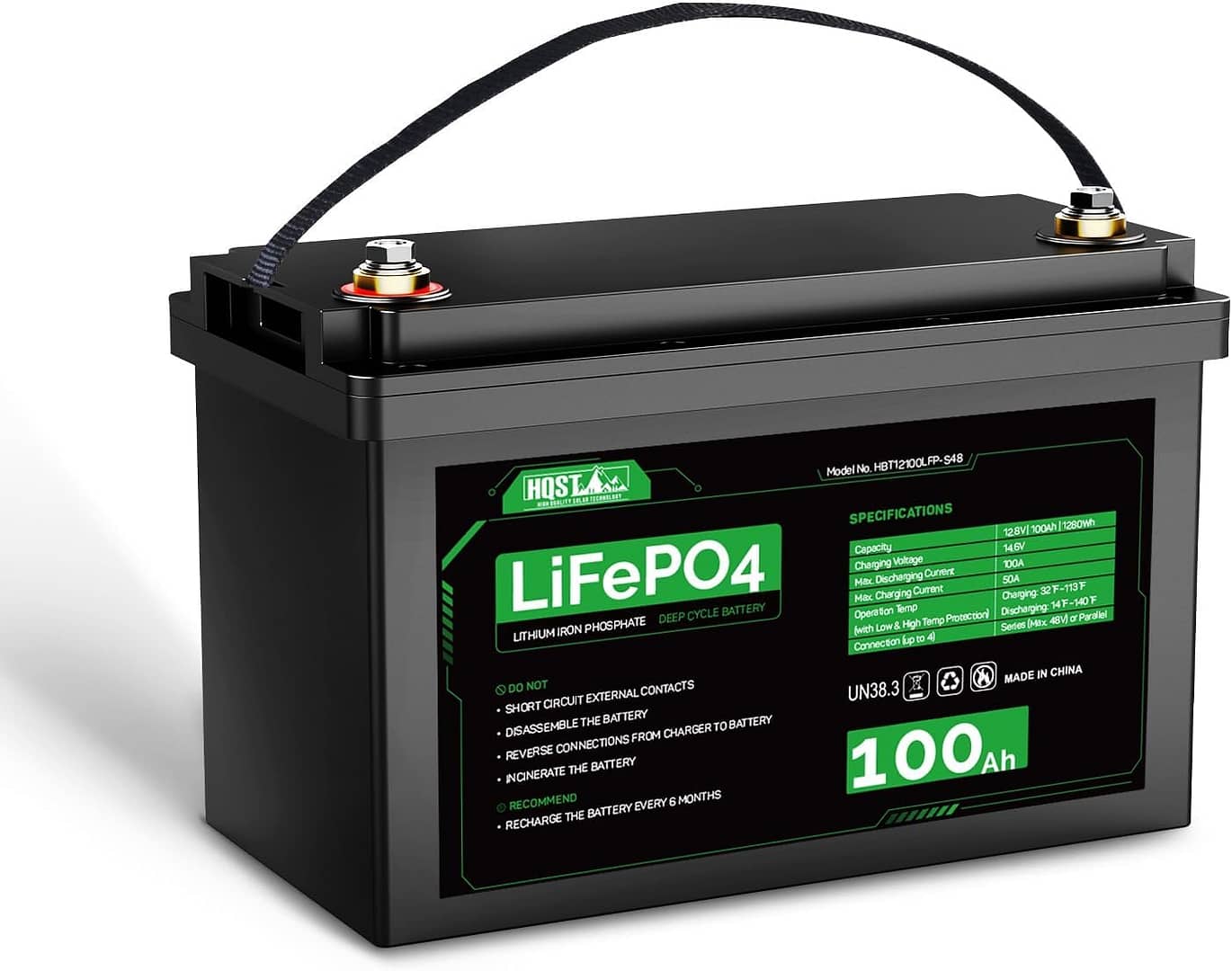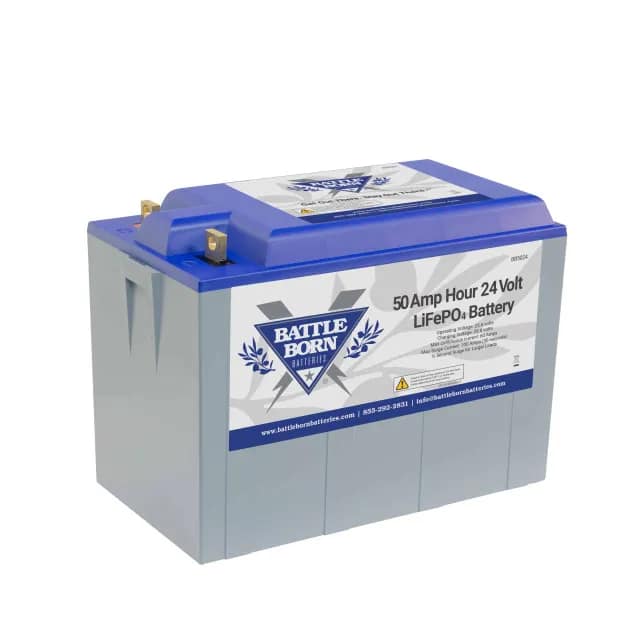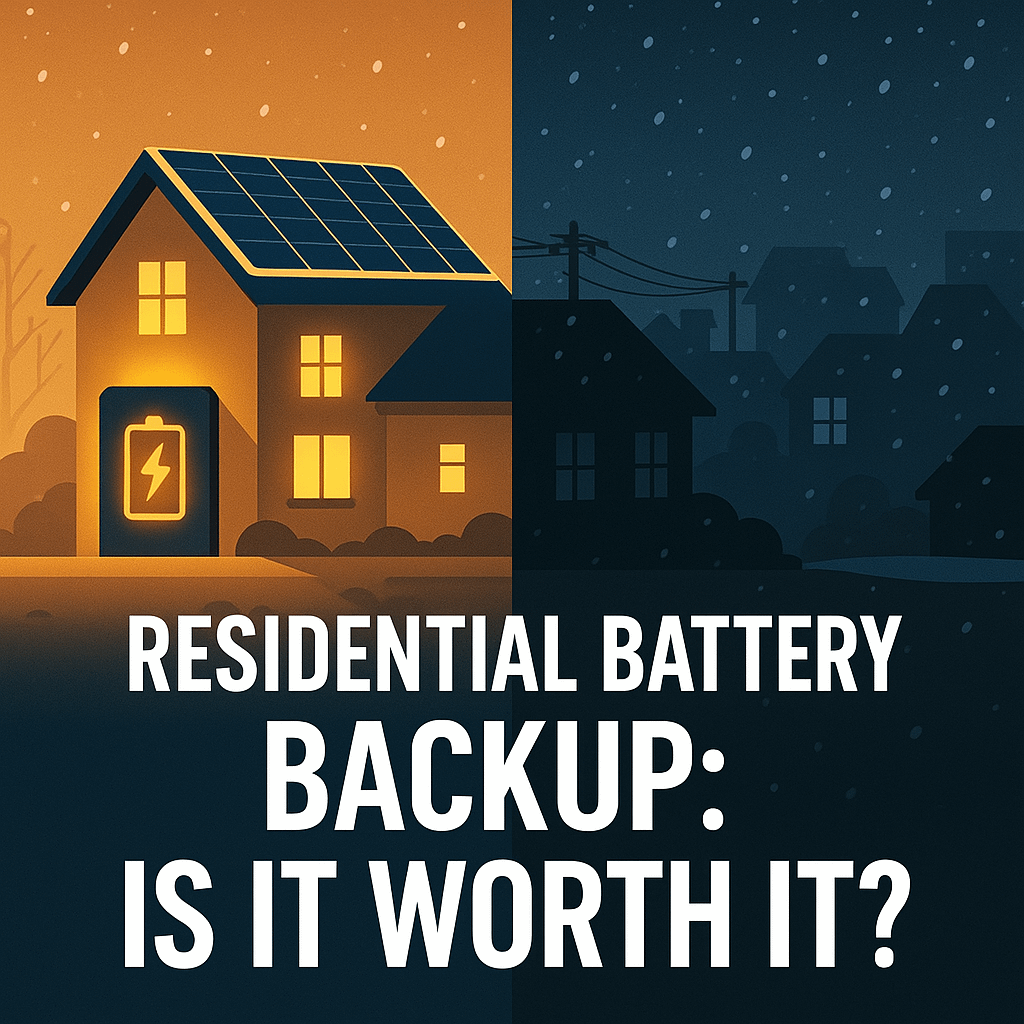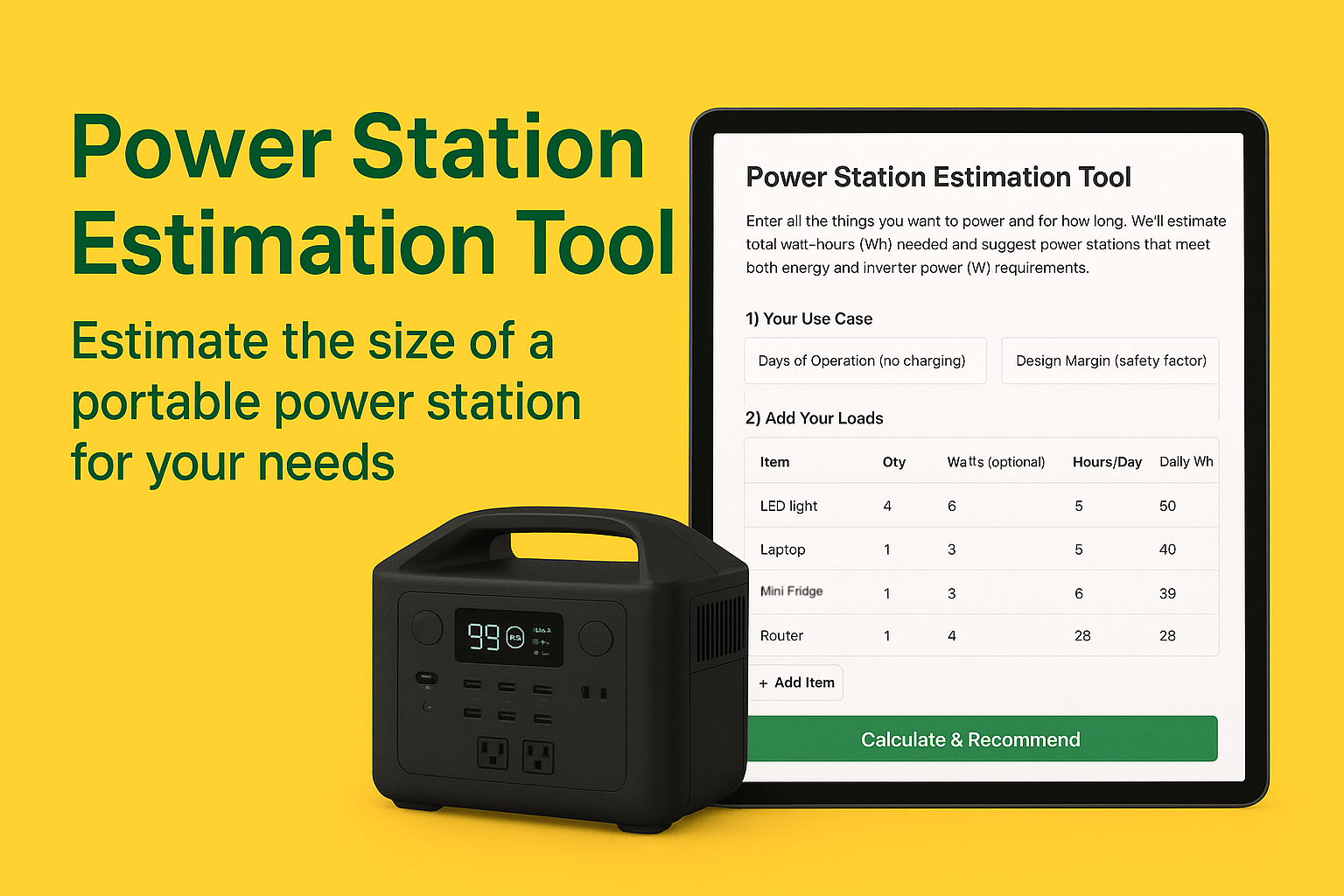In previous editions of our Evergreen Off-Grid blog we talked about how many solar panels you need for your off-grid and grid-tied solar photovoltaic (PV) systems. In this edition, we’re going to talk about another major component of your system, the battery bank. Our focus in this article will be off-grid battery banks. If your PV system is grid-tied then the size of your battery bank is primarily related to your plan in the event of a grid failure. We’ll cover this and more of your grid-tied battery bank questions in a later edition, so stay tuned!
Batteries! What to do When the Sun Don’t Shine
One thing we know for certain is the clouds will come and caste a gloomy shadow over your power generation plans. The question is, what, if anything, are we willing to. You need to ask yourself what you’re capable of living without? And more importantly, for how long can you live without it?
Days of Autonomy
Your battery bank is your backup plan when your panels underperform. The number of days your battery bank can power your off-grid needs without the sun is called your system’s “days of autonomy (DoA)” At a minimum, it’s recommended for off-grid systems to factor two days for your DoA. However, we suggest sizing your system for five or more days of autonomy. Factoring in more DoA is especially important in regions where the clouds are known to frequent. Or, if you’re using lead-acid batteries as your backup (more on this below).
It’s important to understand some basic differences between the two most common types of batteries used in off-grid systems: lead-acid and lithium-ion. These aren’t the only battery types available for off-grid systems, but they are by far the most common. We’re going to teach you some basics about the two, but if you want a deeper dive into lead-acid vs lithium-ion batteries check out this article.
Lead-Acid Batteries
First off, let’s clarify that you should NOT use car batteries for your off-grid power system. Car batteries are designed to provide a very short burst of very high energy to start your car, but otherwise stay fully charged. Golf cart batteries on the other hand are designed to charge and discharge in a manner which is more similar to our off-grid system. You can easily find lead-acid batteries specifically marketed for solar PV system battery backup.
As we hinted at above, adding additional days of autonomy to your battery bank is particularly advantageous if you’re using lead-acid batteries as your backup. In addition to keeping the lights on when the clouds roll in, you will extend the life of your batteries with a higher DoA. Lead-acid batteries are damaged when they’re drained below half their capacity. Some would argue the damage begins even sooner than that. You can install a low voltage cut-off to protect your battery bank from being drained too low, but that triggers the dreaded days of autonomy.
Note: As an affiliate I earn from qualifying purchases.

HQST LiFePO4 Battery 100ah Lithium Battery
$179.99
Depth of Discharge
Depth of discharge, or DoD, is the industry term that describes how far a battery is drained in relation to its capacity. A battery at 30% DoD has 70% of its capacity remaining. Similarly, a battery at 80% DoD has 20% of its capacity remaining. The industry term for remaining the battery’s state of charge (SoC). SoC is what you look at to see how much juice is left in your cell phone.
The same amount of energy will represent a smaller percentage of a larger battery bank than a smaller battery bank. So, increasing the size of your battery bank will result in a more “shallow” DoD. By preventing them from approaching 50% DoD, you will extend the life of your lead-acid batteries.
Lithium-Ion Batteries
Lithium-ion batteries have much less limitations than lead-acid batteries. Some newer models can be drained as deep as you want without affecting their life span, according to their manufacturers. No matter the brand, your lithium-ion batteries should be able to handle at least an 80% DoD.
Get More Out of Them
If you’re able to discharge more of your battery, you have access to more of it’s capacity. A 100 Ah lithium-ion battery can safely power your system for longer than a similarly sized lead-acid battery on a single charge. This means your battery bank capacity can be sized smaller with lithium-ion. This trade-off can help you gain back some of the up-front cost difference. Lead-acid batteries are cheaper off the shelf.
Days of Autonomy
Factoring in additional days of autonomy on a system using lithium-ion batteries will not extend the life of your batteries. For the most part, you have a predetermined amount of power your lithium-ion battery will output. That output is unaffected by how deep you cycle the batteries, so long as you’re following the manufacturer’s recommendations. Adding additional capacity will extend the amount of time before you need to replace your batteries. But this is just like buying more barrels of gas, of course they lasts longer.
Lithium-ion batteries are also available in different chemistries and varieties which have their advantages and disadvantages. For a discussion on different types of lithium-ion batteries check out this article.
Help Me Size My Battery Bank Already!
To help you understand how to size your battery bank we’ll bring back our example from a previous post, How Many Solar Panels Do I Need? (Off-Grid Edition). In this article we prepared a simple load profile spread-sheet for a not very realistic off-grid system. The far-left column had a single row entry for each hour of a 24-hour day. If you were creating a profile for your system, you would choose a day when you use the most energy. Please read our previous edition, referenced above, for a more detailed explanation.
Table 1: My Bug-Out Cabin Energy Load Profile
| 24 hr clock | Refrigerator1 | TV2 | CPU3 | Interior Lighting4 | Exterior Lighting5 | Phone Charging6 | Etc.7 | Total |
| 0000 | 50 | 100 | 150 | |||||
| 0100 | 50 | 100 | 150 | |||||
| 0200 | 50 | 100 | 150 | |||||
| 0300 | 50 | 100 | 150 | |||||
| 0400 | 50 | 100 | 150 | |||||
| 0500 | 50 | 100 | 150 | |||||
| 0600 | 50 | 100 | 100 | 250 | ||||
| 0700 | 50 | 50 | 100 | 100 | 300 | |||
| 0800 | 50 | 50 | ||||||
| 0900 | 50 | 50 | 100 | |||||
| 1000 | 50 | 50 | 100 | |||||
| 1100 | 50 | 50 | ||||||
| 1200 | 50 | 50 | 100 | |||||
| 1300 | 50 | 50 | ||||||
| 1400 | 50 | 50 | ||||||
| 1500 | 50 | 50 | ||||||
| 1600 | 50 | 50 | 100 | |||||
| 1700 | 50 | 50 | 100 | |||||
| 1800 | 50 | 50 | 20 | 120 | ||||
| 1900 | 50 | 50 | 100 | 20 | 220 | |||
| 2000 | 50 | 100 | 100 | 20 | 270 | |||
| 2100 | 50 | 100 | 100 | 20 | 270 | |||
| 2200 | 50 | 100 | 150 | |||||
| 2300 | 50 | 100 | 150 | |||||
| Total (Wh) | 1,200 | 200 | 200 | 500 | 1,200 | 80 | 3380 Wh |
Total Energy Use
So, now we’ve pulled up our imaginary Bug-Out Cabin Energy Load Profile Table. You’ll see on the far right, bottom row, the total energy we consumed on this imaginary day was 3,380 Wh, or 3.38 kWh. Ok, so all I do in my bug-out cabin is eat and watch TV. Judge me why don’t you?
Upon a quick examination you will also notice that our table doesn’t include any thermal loads. If this was your off-grid system and you planned to heat or cool your dwelling, the day you chose for your spread sheet should represent those days you crank up the AC or heating the most. In our case we didn’t have any thermal loads. Hopefully we’re at least passively heating or cooling our bug-out cabin.
Voltage
The voltage of your system is a parameter you select with your own system requirements (and budget) in mind. For the purposes of this exercise let’s assume the batteries we purchase are 12 volts (V).
Combining Batteries in Series
The number of batteries you have in series will determine the over-all voltage level of your system. So, if we string four, 12 V batteries together in series (pos + to neg-), our system will be 48 V.
12V x 4 batteries in series = 48V system
Combining Batteries in Parallel
We can add additional storage capacity to our 48 V system by adding additional 48 V strings of the same battery types in parallel. For a more detailed discussion of combining batteries in series and parallel combinations check out this article.
Does it Matter What Voltage I Select?
Power is the product of current and voltage.
P = I * V
For the same amount of power, an increase in voltage level will proportionally decrease the current level. An advantage of setting your output voltage higher and lowering your output current is that it allows us to use smaller diameter wire. Smaller wire saves us money. This will be especially nice for us if our wires have to travel a long distance from the point of generation to the point of use.
For now, let’s just say the system in our example will be set at 48 V, which is a very common choice for off-grid systems… but may be overkill for our example. Remember, the goal here is to understand the concepts, not to build our silly example system. If you teach a person to fish and all…
Amp-Hours Per Day (Ah/day)
Now that we know our daily system energy requirements (3,380 Wh), and we also know our system Voltage level (48 V), we can determine the required battery capacity (in amp-hours, or Ah). The battery capacity is what we’ll need to store in order to supply sufficient energy on our example day.
Watts = Volts x Amps or Wh = Volts x Ah
Solving for Ah: Ah = Wh/Volts
In our case, Ah = 3,380 Wh / 48 V = 70.4 Ah
Thus, we need 70.4 amp-hours of battery storage to supply us with a day of energy in our example.
Note: As an affiliate I earn from qualifying purchases.
Off-Grid Batteries

Depth of Discharge
Now we need to factor in our depth of discharge. If this limit exists it will be unique to your battery and you can find it in the manufacturer’s specifications. For our example we’ll assume our manufacturer recommends a 90% max DoD. Since we never want to draw our battery below 10% remaining battery, we need to size our system that much higher to account for this limit.
70.4 Ah / 0.90 = 78.2 Ah
We need 78.2 Ah of stored energy in our batteries in order for them to drain 90% from full capacity on the day we chose as our example.
Days of Autonomy
Now that we know we need 78.2 Ah for a single day of energy storage, let’s allow ourselves five days of autonomy.
78.2 Ah/day * 5 days = 391 Ah. We need 391 Ah of stored energy to get us through a five day stretch with no power generation.
So.. How Many Batteries is That?
Let’s further assume that the 12 V batteries we’ve selected have 100 Ah capacity, which is a common value if you’re looking to buy. And, let’s recall, adding batteries in series increases the output voltage, but does not increase the capacity (Ah).
Combine in Series
So, in order to get 391 Ah at 48 V, we first need to add 4 of our batteries in series. Adding four of these 12 V batteries in series gives us a 48 V system with 100 Ah capacity.
Combine in Parallel
Now let’s add four of the exact same strings of fours batteries in parallel and now our system is 48 V with 400 Ah capacity. This is enough for us to bug-out sun free for five of our most power-hungry days.
Final Answer
If you’re counting, that’s 16 of our example batteries. Sixteen batteries could easily set you back $3,000+ if you’re buying them new. Also note, the typical American household uses 10 times the energy we’re using for our example. If you plan to power a load that large, it’s more economical to buy a specialized off-grid battery bank capable of supplying your needs. That size battery bank can range from $10k to upwards of $25k or even $50k.
What About the Inverter?
The inverter size you need depends on the peak energy demands of your system. The various considerations for appropriately sizing your inverter and other critical PV system components will have to wait for a future edition. For now, let’s just say we need to factor in our peak energy demand.
It’s crucial to note this exercise isn’t as simple as finding the max energy demand of all of your power consuming devices and adding them all up. If you do that you will over-size your inverter and waste money. It’s probably not realistic to assume every load on your system will be energized full blast at the exact same time. If they are, it’s probably ok to let the system overload trip so you can consider what loads are actually necessary, then re-boot.
Summary
Once again, we find that sizing our solar PV system is heavily situationally dependent and requires analysis to balance your needs and wants. If the consequences of running out of power is a momentary loss of creature comforts, perhaps it makes sense to allow some extra days of autonomy. Maybe save some money with a smaller sized battery bank and pull out a book or a board game when you run out of juice.
We learned some differences between lead-acid and lithium-ion batteries and discovered lithium-ion is superior for our off-grid purposes. Now we know that we need to size our battery bank to keep us energized for several days without sun. And we know this is more important if we use lead-acid batteries.
You learned some simple calculations to determine how your energy use, battery voltage and battery capacity all relate and hopefully you feel comfortable determining how many batteries it will take to power your off-grid needs.
Join Our Off-Grid Community!
If you enjoyed this edition, please subscribe! Contact us, let us know what you what to learn about. Or, simply drop a comment below, we’d love to hear from you. Thank you for visiting Evergreen Off-Grid! – info@jonshally





